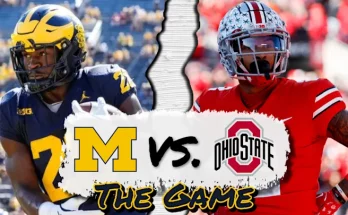BREAKING: LeBron James holds the record for the most career turnovers in NBA history: 5,471. It is a statistic that, at first glance, might appear to be a blemish on the legacy of one of the most accomplished basketball players to ever grace the hardwood. For critics, it’s an easy talking point—a number that can be wielded in barbershop debates and social media arguments in an attempt to undercut his place in the pantheon of all-time greats. However, as with many aspects of LeBron’s historic career, this record demands a much more nuanced understanding. Context is everything, especially when it comes to a player whose career has been defined by durability, control, and unrelenting responsibility as the engine of every team he’s ever led.
The sheer volume of LeBron James’ career—spanning over two decades, more than 1,700 games played when including both regular season and playoffs, and countless possessions—makes statistical outliers inevitable. Turnovers are part of the cost of doing business for players who are primary ballhandlers, facilitators, and shot creators. The players who accumulate the most turnovers are often the same players who dominate possession, who run the offense through their own decision-making, and who shoulder the burden of initiating and finishing plays. In that sense, LeBron James’ turnover record is not an indictment of carelessness; it is a statistical consequence of control. It is the output of a man who has been in charge of the game more often and longer than anyone else in history.
To grasp the gravity of this number—5,471 career turnovers—we must first understand the context in which it was accrued. LeBron has been in the NBA since 2003. He has started virtually every game he’s played, logged massive minutes, and often led his teams in points, assists, and sometimes even rebounds. He’s had stints with three different franchises—Cleveland Cavaliers, Miami Heat, and Los Angeles Lakers—and in each stop, he’s been the unquestioned floor general. Even when playing alongside other greats like Dwyane Wade, Kyrie Irving, or Anthony Davis, the game almost always flowed through LeBron. His teams have run countless offensive sets through him as the primary decision-maker, often from the top of the key, with the expectation that he would make the right call—whether scoring himself, finding an open shooter in the corner, or threading a no-look bounce pass through traffic. With that kind of responsibility comes risk, and with risk comes turnovers.
It’s also worth noting that LeBron is not alone in the high-turnover club. The players with the most turnovers in NBA history include names like Karl Malone, John Stockton, Kobe Bryant, and Russell Westbrook. All of them are Hall of Famers or future Hall of Famers. All of them were primary offensive options for extended periods. Turnovers are not necessarily a sign of recklessness or inefficiency, but rather, an unavoidable byproduct of high usage and ball dominance. In LeBron’s case, the record underscores how much trust coaches and teams have placed in his hands over the years.
Ironically, LeBron is also among the all-time leaders in assists, ranking fourth on the all-time list. That dual reality—being among the top in both turnovers and assists—captures the essence of his career. He is both artist and architect, a scorer and a savant, someone who orchestrates the offense with surgical precision while also embracing the creative chaos that comes with elite playmaking. And yes, sometimes that chaos results in a turnover. But far more often, it results in a highlight, a backdoor cut, a three-pointer in rhythm, or a perfectly executed fast break.
Critics may point to the turnover record as a chink in the armor, but the truth is that LeBron James’ turnovers have rarely, if ever, been the defining reason his teams have failed. Even in postseason losses—whether in the 2007 Finals sweep against the Spurs or the 2011 collapse against the Mavericks—the narrative was seldom about turnovers. Instead, critiques centered around offensive aggressiveness, shot selection, or supporting cast issues. The turnovers, while present, were just part of the statistical scenery—there but not damning. When viewed through the lens of overall impact, LeBron’s value has always overwhelmingly outweighed the cost of his turnovers.
What also makes this statistic more interesting is how it’s been accumulated in an era that emphasizes pace, space, and advanced analytics. LeBron has played through multiple NBA evolutions. He began his career in a league that still valued mid-range jumpers and low-post play. He’s still thriving in an era that prioritizes three-point shooting, positional versatility, and pick-and-roll efficiency. Across these transitions, his role as a ballhandler has only increased. In Miami, he adapted to a motion-heavy offense under Erik Spoelstra. In Cleveland, he worked with Tyronn Lue to facilitate around shooters like J.R. Smith and stretch forwards like Kevin Love. In Los Angeles, he’s alternated between scorer and facilitator, sometimes in the same possession. This adaptive brilliance has led to a dizzying number of on-ball situations, each one with the potential for brilliance or error. The turnover record, in this sense, is merely an echo of the magnitude of his influence.



